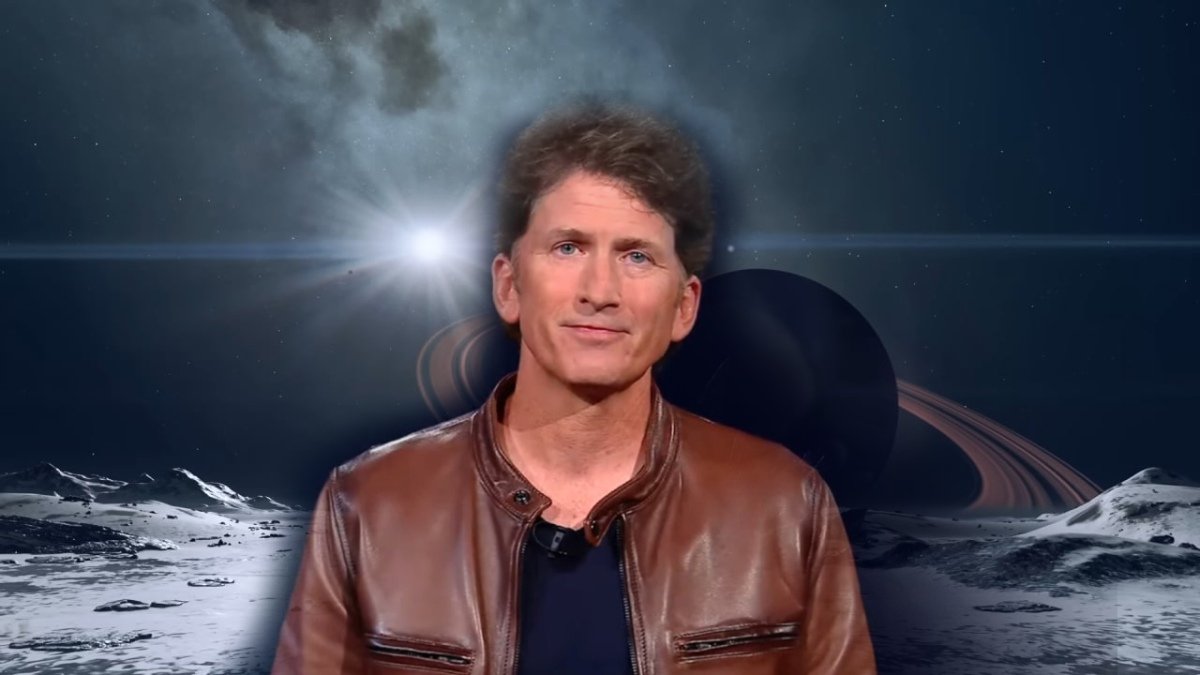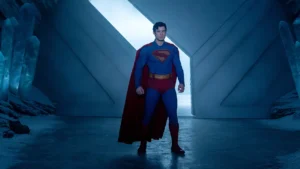
Saying that Starfield is one of Bethesda’s most ambitious projects is almost like saying that water is wet, something totally obvious and redundant. After exploring medieval worlds and post-apocalyptic futures, the company now dreams big: exploring outer space.
Being one of the most anticipated games for 2023, the space exploration RPG is Bethesda’s new bet after a few years without a new IP (intellectual property), starting a new franchise. And when we say a few years, it’s no small feat: the developer has been working on the game’s idea for two and a half decades.
But after all, why did Starfield take 25 years to make? Why did the company take so long to develop the game? Let’s answer that question below!
Todd Howard’s Walk
Let’s start with the main character of this story: Todd Howard. The young man passionate about games became famous after his work at Bethesda, but he didn’t always work with games.
Before joining Bethesda, Todd was studying finance in a small town in Virginia. Passionate about classic RPGs like Wizardry and Ultima III: Exodus, he applied for a job at a developer that was on the way to college during his senior year: Bethesda Softworks.
Well, proving that it was written in the stars that this partnership was more than accurate, the company stood in the way of the young developer. Todd didn’t get the job at first, as he hadn’t finished college yet, which was a prerequisite for the job. However, in 1994, he joined the company as a producer, The Terminator: Future Shock being his first project in the industry, followed as a designer on SkyNET, a 1995 game.
Todd Howard, the main name behind Starfield.
However, the turning point for Todd would come in 1996, when he participated for the first time in The Elder Scrolls saga, as a designer in The Elder Scrolls II: Daggerfall. The game was so well received that Bethesda assigned Todd more responsibilities in their next game, The Elder Scrolls Adventures: Redguard.
The project, however, was a huge failure due to a silly problem: the game was only compatible with a single video card, which ended up causing financial problems for Bethesda. As project leader for the saga so far, he already had the necessary confidence that the company needed to leave the franchise in good hands, also working as a leader on Episode 3: Morrowind, a great success for the company.
‘Fallout’ effect
With good game design results, public and critical reception, Todd was asked what he wanted to do during this limbo between one Elder Scrolls and another, he replied that he wanted to do something similar to Fallout, which at the time was from Interplay. As the company was going bad from the legs since 98, it was bought by Bethesda and, in 2008, the Fallout franchise ended up in the hands of the developer.
From then on, it was just victory: Fallout 3, which already had a good reputation as an RPG, was a critical success. In addition to shining through the story, the game stood out for the reformulation of the series and its predecessors, giving even more credibility to Todd’s work.
As a director on The Elder Scrolls V: Skyrim, he was also instrumental in revolutionizing the way we roleplay. In addition, we find out the hard way how many different versions a game can be released in.
His resume also includes Fallout 4 and the more recent Fallout 76, where he worked as an executive producer but took the blame for the game’s problems. After all, Todd Howard ended up becoming the face of the project.
Todd Howard and Space: The Idea of Starfield
So he proved that he knew how to trap players with a magic that only he knew, he knew how to transfer tabletop RPG elements to digital, but he wanted more. None of these stories were his own and he wanted to go beyond what our small planet can offer us. He wanted to take roleplaying into space.
His fascination with outer space coincidentally starts with his family: Jeff Howard, his older brother, was born on July 20, 1969 — the date on which Neil Armstrong and Buzz Aldrin stepped on the Moon during the Apollo 11 mission. , in an interview with GQ, Todd hopes we discover alien life before his death and wants to find out if the world is a computer simulation.
But, answering the question that brought you to this video: Did Starfield really take 25 years to make? The answer is: it’s not like that. It is true that the idea of a space game by Bethesda came up in the 90s, however, the magnitude of the project put Todd Howard’s feet on the ground, which, in several interviews, already made clear his desire to make a game in space .
Starfield actually spent 25 years in the creation process, which is quite different from the development process. The company’s first attempt at making a game in space was The 10th Planet, the company’s answer to Star Wars: TIE Fighter. The game was a space combat simulation and, unlike its most notable Bethesda games, The 10th Planet was focused on battles, not exploration.
For more than two decades, Todd Howard dreamed of making a space RPG.
Another important detail is that there was a large team behind the project, which was supported by a film studio. Centropolis, the production company responsible for the visual effects of Independence Day, was in charge of creating the game’s alien races and ensuring that its narrative was also worthy of a blockbuster.
Unfortunately, due to some scheduling conflicts from both Bethesda and the producer (who was also handling the Godzilla movie and Independence Day) the game suffered several delays until it was canceled after three years from the original release date. The dream of The 10th Planet didn’t die… it just lay dormant.
Coincidence or not, recently Reddit users found posts from 1997 on internet forums where Todd Howard, who was 27 at the time, wrote the following comment: “yeah, TOL was pretty short. Someone mentioned Sundog and I can’t believe I didn’t even remember him. That game had an interface that rivaled most new games, with its nifty object-based inventory. Now, a space RPG… that would be something!”
starfield comes to life
And here we are: after a few postponements and countless hours of gameplay already confirmed by the developers, Starfield is among us. The green light for the production of the game only came in 2013, two years before the release of Fallout 4, where everyone asked “what is the next big project that the studio will work on for years?”.
It was at the right time. Actual development for the game began in 2015, taking eight years to complete. Inclusive, few games take that long in their development phase: an example of them is Red Dead Redemption 2, which shows how the wait is worth it. Still, Todd said Starfield only really got fun to play in the year of its original release, 2022, four years after it was announced at E3 2018.
Without the limitations of 25 years ago and with a level of respect that has been earned over the years, it seems that Bethesda’s new IP has learned from the trials and tribulations of the past. Now, just wait for the launch of the game, which promises to take players on an immersive space journey to find answers about a mystery of humanity.
Starfield launches on PC, Xbox Series S, and X on October 6th, and will also arrive on Xbox Game Pass with cloud support. For those who bought the Deluxe version of the title, access to the game will be released on September 1st.
Source: https://www.tecmundo.com.br/voxel/269053-historia-tras-starfield-jogo-demorou-25-anos-nascer.htm


